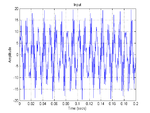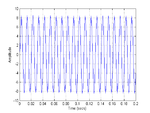lakshmikalyani
Member level 1
hi
i am doing a project on filter design
i am stuck while testing the filter.
i want to know how to test a filer in matlab coding
my code is
i want to give "in" as input to the filer that had designed. and check the output and analyze it
can u please help me
i know we can give a sine signal in simulink and realize the filter and fda tools but i am not getting the expected outputs
i want to do it in coding
can u help me out of it
i am doing a project on filter design
i am stuck while testing the filter.
i want to know how to test a filer in matlab coding
my code is
Code dot - [expand]
i want to give "in" as input to the filer that had designed. and check the output and analyze it
can u please help me
i know we can give a sine signal in simulink and realize the filter and fda tools but i am not getting the expected outputs
i want to do it in coding
can u help me out of it
Last edited by a moderator:

